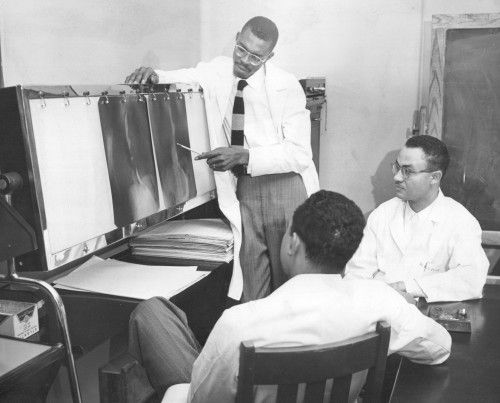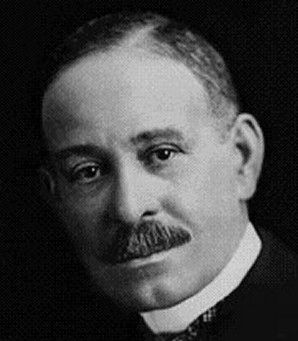Dr. Daniel Hale Williams (1856-1931) was the founder of the Provident Hospital. He worked tirelessly to create educational opportunities for black medical scholars, which transformed the national medical landscape.

Dr. Daniel Hale Williams was born in Hollidaysburg, Pennsylvania. His father was a barber who was deeply religious and imparted a sense of pride in his eight children. When Daniel was nine, his father died of tuberculosis. His mother, Sarah Price Williams, moved the family to Baltimore to live with relatives. In Baltimore, Daniel apprenticed a shoemaker for three years. He then moved to Janesville, Wisconsin where the lived with the Anderson family and worked in their barber-shop as a successful barber. He attended high school and later an academy where he graduated at the age of twenty-one.
He began his studies of medicine as an apprentice under Dr. Henry Palmer, a prominent surgeon. Dr. Palmer had three apprentices and all were accepted in 1880 into a three-year program at the Chicago Medical School, which was affiliated with Northwestern University. Daniel graduated with an M.D. degree in 1883. Dr. Williams' began practice in Chicago at a time when there were only three other black physicians in Chicago. He secured an appointment at the South Side Dispensary, where he could practice medicine and surgery. He had appointments with the City Railway Company and the Protestant Orphan Asylum. He also maintained his affiliation with Northwestern University Medical School for four years while serving as an anatomy instructor.

Considered a thoughtful and skilled surgeon, Dr. Williams’ practice grew as he treated both black and white patients. But he was acutely aware of the limited opportunities for black physicians. In 1889, he was appointed to the Illinois State Board of Health (now known as the Illinois Department of Public Health), and worked with medical standards and hospital rules. He was aware of the prejudice against black patients in hospitals and the inferior treatment that was often dispensed. In 1890, Reverend Louis Reynolds, whose sister Emma was refused admission to nursing schools because she was black, approached Dr. Williams for help. This led to the founding of the Provident Hospital and Nursing Training School in 1891. The first years of the hospital were challenging, but successful. Dr. Williams insisted that his physicians remain abreast of emerging medical discoveries. He himself earned widespread renown as a surgeon in July 1893 when a young man named James Cornish entered the Hospital with chest stab wounds. Dr. Williams performed a new type of surgery to repair a tear in the heart lining, saving his life. While proud of his accomplishments at Provident Hospital and those of the staff, Dr. Williams recognized that the hospital would need to grow to accommodate patients. In 1896, with substantial volunteer support, a new 65-bed hospital was opened.

Despite his national prominence, Dr. Williams faced differences with Provident’s administrators and other physicians, principally over hospital privilege issues. Yet, he continued working at Provident and maintained an active national travel schedule until 1912, when he resigned from Provident after being appointed attending staff surgeon at St. Luke’s Hospital in Chicago (now known as Rush-Presbyterian St. Luke’s Medical Center). He served as an attending surgeon at St. Luke’s Hospital until 1926. He remained in active practice in Chicago until he suffered a stroke in 1926. He then moved to Idlewild, Michigan where he lived in retirement until his death in 1931. At his death, he left donations to many organizations he had supported including the National Association for the Advancement of Colored People, Meharry Medical College, Howard University and other institutions. These gifts helped provide expanded medical education opportunities for black students.
Copyright © 2000-2024 The Provident Foundation. All Rights Reserved.